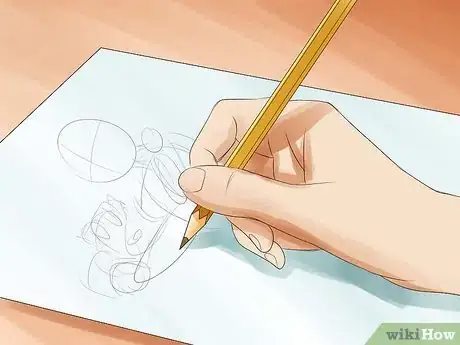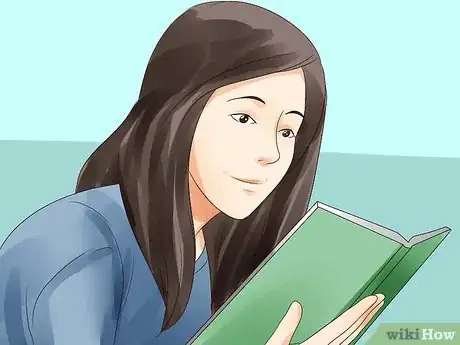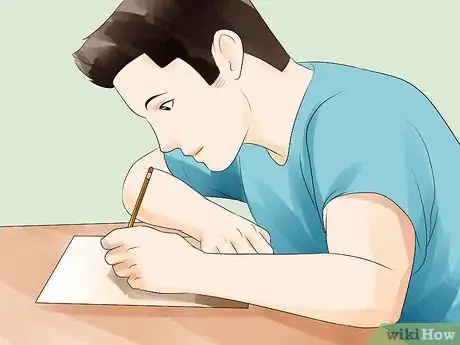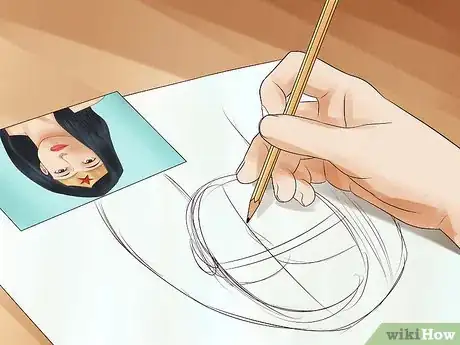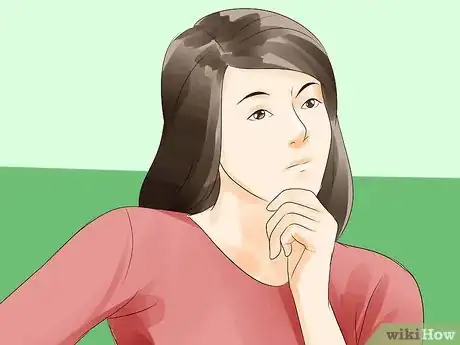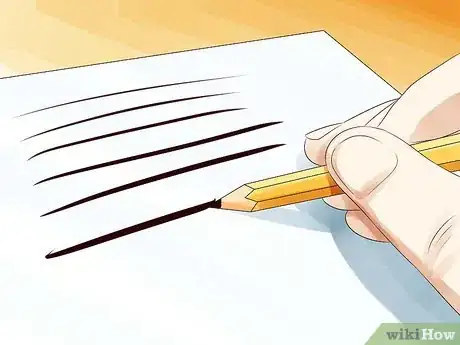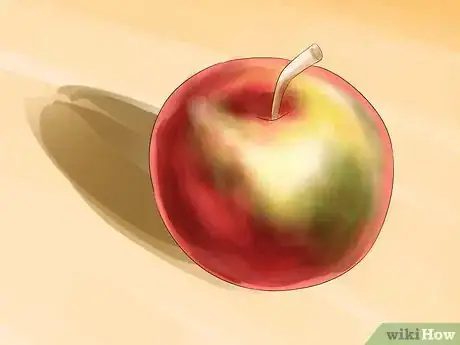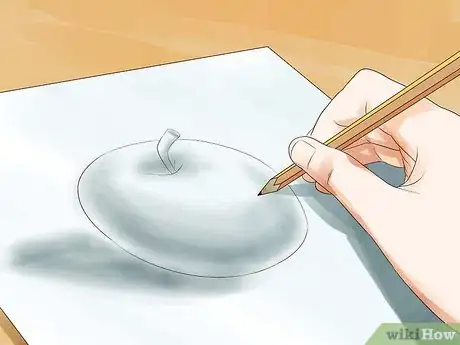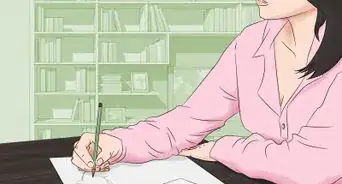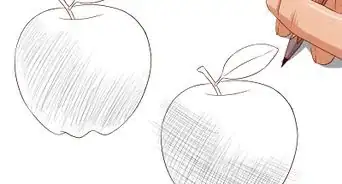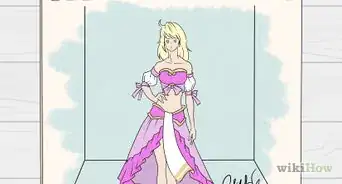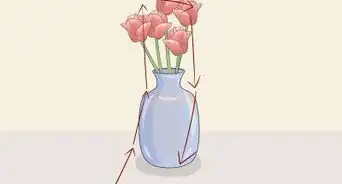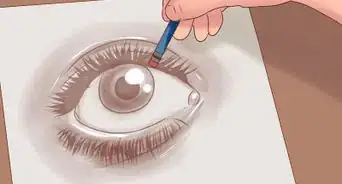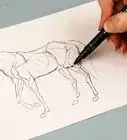This article was co-authored by Claire Wentzel. Claire Wentzel is an award-winning Artist and Strategic Creative Consultant. Her business, Red Rose Studios, is based in Las Vegas, Nevada, where she also serves on the Clark County Public Art Committee. With over 20 years of experience, she specializes in mixed media participatory art, brand messaging, and building organizational culture. She earned her BA in Fine Art with Distinction from the University of Colorado-Boulder and completed a painting residency at the International School of Painting, Drawing, and Sculpture. Her chalk mural work has been featured in EdHat and I Madonnari Italian Street Painting Festival advertising.
This article has been viewed 201,661 times.
Drawing is something you can practice continually and still find room for improvement. If you're looking to sharpen your skills, there are three areas you can focus on. The first is the construction or build of your subject; making construction sketches lightly on the page is an essential habit that saves time and produces consistency when drawing the same object in different poses. Another area is simplification, or breaking things down into their most basic elements. Finally, focus on expressing volume and weight through highlights and shadows. Of course, it takes time and hard work to improve your drawing, but following these tips will help you get there!
Steps
Using Construction
-
1Sketch trial lines very lightly. Use a light pencil line, and erase the lines when the drawing is done. This way you can sketch in lots of light trial lines until you find the right one without messing up your paper.
- Alternatively, use a blue pencil which does not show up on scans and copies.
- Many artists use "col-erase" blue pencils.
-
2Study model sheets to see how characters are built. A model sheet has numerous sketches of a single animation character in various poses and expressions. It is used to standardize the character's appearance when multiple animators are working on a project. Looking at model sheets can help you understand how every figure has a particular construction set-up that serves as a base.
- Many model sheets are available on the Internet.
Advertisement -
3Use anatomy books as reference for human and animal subjects. Gray's Anatomy, for example, is a classic that can help you learn more about the construction of the human body. You can then apply this knowledge to your drawings of various poses.
Simplifying and Reducing
-
1Ignore details when you start a sketch. Take a bit of time to analyze things, breaking them down into their basic parts. Learn to see through the clutter, and to reduce and draw the essential. Once you've trained yourself to do this, you will be able to draw anything.
-
2Draw upside down. Drawing upside down helps you unlearn drawing what you think you see. Instead, you draw what you actually see. The easiest way to draw upside down is if you are drawing from a photo: simply invert the photo and go from there.
- Alternatively, if you're working from a reference sketch, you can invert the reference sketch.[1]
-
3Do 30-second sketches. This helps you because it doesn't give you time to bother about detail. Sketch as much as possible.
- Practice making quick sketches when you're out and about in the world (at the zoo, on the bus, in the park, etc.). This can help you get at the most basic elements of your object and makes useful reference material that you may develop later.[2]
-
4Look around and ask, "How would I draw that?" Get into the habit of visually analyzing your surroundings, even when you don't have pencil and paper available. Imagine breaking things down into their most essential shapes. You might end up seeing the world in a whole new way.
- Try sketching without looking at the paper. The drawing features will look wonky, but this will help you remove your preconceived notion of what you think things are supposed to look like.
Perfecting Volume
-
1Practice drawing shadows and highlights. Your object has volume and weight, which, when light falls on it, results in shadows and highlights. Instead of drawing the outline of your object, try starting by sketching a well-balanced separation of light and dark areas.
- Approach shadows as you would a flat, graphic shapes. Some may be darker than others, but within individual shadows there should be a minimum of contrast and texture. Use the side of your charcoal pencil to create these shadow shapes, rather than scribbling in lines.
- Transition from shadows to highlights with halftones. Here, create gradations of contrast with darks from the shadow side and lights from the highlights.
- Your highlights may have some texture, depending on the material. There may also be areas without any texture.[3]
-
2When you do use a line to draw, convey volume by varying line weight. Hold a charcoal pencil like a brush. Use the length of the charcoal to produce thin lines, and the side for softer, thicker lines. You can also transition the line from thick to thin to produce a taper (great for lines moving between shadows and highlights).[4]
-
3Pay attention to the direction of the light source and see how shadows fall. If you are drawing from life, walk around the model or object and observe it from all angles.
-
4Make a mould of your subject. If you're having a hard time conveying light and shade properly, make a basic model of your subject with moulding clay. It needn't be perfect: the point is to help you see how light bounces off the shape, creating highlights and shadows.[5]
-
5Practice drawing negative space. Negative space is all the space between objects. Looking at negative space can be very helpful in understanding volume, as well as for measuring distances between things.
- As an exercise, you can draw negative space only (rather than the object). This is particularly effective when working with a heavier medium like charcoal.[6]
-
6Use dramatic lighting. This is a trick you can use to make your picture "pop": it brings out strong contrast and drop shadows, which often give the illusion of reality.
Expert Q&A
-
QuestionHow can I improve my art fast?
 Claire WentzelClaire Wentzel is an award-winning Artist and Strategic Creative Consultant. Her business, Red Rose Studios, is based in Las Vegas, Nevada, where she also serves on the Clark County Public Art Committee. With over 20 years of experience, she specializes in mixed media participatory art, brand messaging, and building organizational culture. She earned her BA in Fine Art with Distinction from the University of Colorado-Boulder and completed a painting residency at the International School of Painting, Drawing, and Sculpture. Her chalk mural work has been featured in EdHat and I Madonnari Italian Street Painting Festival advertising.
Claire WentzelClaire Wentzel is an award-winning Artist and Strategic Creative Consultant. Her business, Red Rose Studios, is based in Las Vegas, Nevada, where she also serves on the Clark County Public Art Committee. With over 20 years of experience, she specializes in mixed media participatory art, brand messaging, and building organizational culture. She earned her BA in Fine Art with Distinction from the University of Colorado-Boulder and completed a painting residency at the International School of Painting, Drawing, and Sculpture. Her chalk mural work has been featured in EdHat and I Madonnari Italian Street Painting Festival advertising.
Award-Winning Artist and Strategic Creative Consultant Just keep doing it and don't judge yourself. There's no rush! Just follow your passion, play with the materials that you think are interesting, represent the subjects that you find fascinating, and just keep doing more of it! Keep experimenting and, eventually, a visual language will become apparent through that.
Just keep doing it and don't judge yourself. There's no rush! Just follow your passion, play with the materials that you think are interesting, represent the subjects that you find fascinating, and just keep doing more of it! Keep experimenting and, eventually, a visual language will become apparent through that. -
QuestionWill I get better if I keep practicing?
 Community AnswerYes! The more you practice, the better you will get! If you make a mistake, it's okay, just keep practicing!
Community AnswerYes! The more you practice, the better you will get! If you make a mistake, it's okay, just keep practicing! -
QuestionWhere can I get charcoal pencils?
 Community AnswerTry a local arts and crafts store. Online sources will also have these, and they'll be easy to buy and have posted straight to you.
Community AnswerTry a local arts and crafts store. Online sources will also have these, and they'll be easy to buy and have posted straight to you.
Expert Interview

Thanks for reading our article! If you'd like to learn more about becoming an artist, check out our in-depth interview with Claire Wentzel.
References
- ↑ http://www.finearttips.com/2014/01/14-ways-improve-drawing-skills-2014/
- ↑ http://www.finearttips.com/2014/01/14-ways-improve-drawing-skills-2014/
- ↑ https://www.proko.com/course-lesson/how-to-draw-hair/assignments
- ↑ https://www.proko.com/course-lesson/how-to-draw-hair/assignments
- ↑ http://www.finearttips.com/2014/01/14-ways-improve-drawing-skills-2014/
- ↑ http://www.finearttips.com/2014/01/14-ways-improve-drawing-skills-2014/
About This Article
To get better at drawing, do 30-second sketches, which can help you focus on the basic elements of your drawing. Additionally, try drawing upside down from a photo to make yourself draw what you actually see rather than what you think you see. Practice conveying volume by using the tip of your pencil or charcoal for thin lines and the side of it for softer, thicker lines. You can also start your drawing by sketching light and dark areas rather than outlines, which can help you learn to portray the shadows created by objects’ volume and weight. To learn how to study anatomy books to better draw humans and animals, keep reading!
